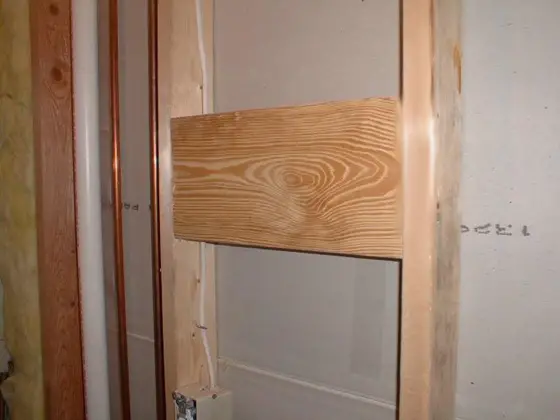Do It Yourself – Sweat Equity

Nailing blocking into walls is a simple task.
DEAR TIM: My husband and I are building a new home soon. What sorts of things do you think we can do in order to take advantage of sweat equity? For instance, we have asked the builder not to lay the sod, because my husband likes to do landscape work. We are not interested in doing any heavy duty work, however, we would like to know what things are acceptable so that we may present the builder with these additional options. Laura W., Kansas City, MO
DEAR LAURA: I think this is a very smart idea that can turn into some serious savings. Finding the builder that will allow you to work side by side with him is going to be the hardest part. Seasoned builders will often shy away from sweat equity participation because they are afraid that you might not complete your part of the job(s) on time. If this happens, the delay(s) can impact the builders schedule and his profitability.
The best way to approach sweat equity jobs is to treat them like a real job. This means work at the job site from 7:30 a.m. until the late afternoon. This often means that you must use vacation days from your regular day job. If you try to work at your house during your off hours or on weekends, you will find that your productivity will often be less than 100 percent. Not only that, your performance at your regular day job may suffer if you work extended hours at your new home.
Your planning skills must also be sharp. You need to create written lists of all the tools and materials you need and have them assembled before you start your tasks. You can't afford delays of any type since other sub-contractors who work for the builder are relying on you to get your work completed.
If your local utility companies allow it, you should be able to easily install your telephone and cable TV cables. There is a good chance that you can install the rough alarm system wiring. It is quite likely that you can install a central vacuum system. The plastic piping is simple to fabricate and many manufacturers have excellent step-by-step guidelines.
I think you are also able to install the garage door opener. This is a great project that requires minimal tools. Simply make sure the electrician installs an outlet at the right location in the garage ceiling and that you install any low voltage wiring required to operate remote push buttons that activate the opener. I'll bet that you are able to install simple garage shelving. This is a simple sweat equity job that can often be complete in several hours. If you are ambitious, consider installing a storage loft in the garage.
If your new house includes a simple deck, consider tackling this job. Decks often can be completed over a period of weekends and not affect the work schedules of others. Be sure you build the deck according to all local codes. Treat the decking with a synthetic water repellent before you attach it to the joist system.
An often overlooked sweat equity job that you must do is blocking. Blocking consists of pieces of rough lumber installed between wall studs at strategic locations. Screws used to attach handrails, towel bars, shower and bath handicap grab bars, mirrors, large paintings, wall hooks, cloths and drapery rods, etc. bite into these pieces of lumber instead of the air found behind most new house drywall. After the blocking is in place, take photos of it before it is covered up. If your house has a crawl space, you can easily install a high performance vapor barrier that will eliminate musty odors in your new home.
Surely you are capable of installing your mailbox, house numbers, and closet shelves and clothes rods. You might also get a credit for performing extensive clean-up work each weekend. Scrap lumber, debris, etc. needs to be cleaned up on a routine basis and you are a perfect candidate. You can also protect the inside and outside of all window and door glass with sheet plastic so that you sweat less while cleaning them just before you move in!
A great book that is loaded with sweat equity jobs that the average to serious do-it-yourselfer can handle is Adding Value to your Home. In this book you'll learn do-it-yourself projects that add value to your house and yard while saving you money. This book gives a clear idea about what type of home - improvement projects will give the highest yield on investments. It is also written for those homeowners who need the basic skills instruction, clearly explaining step - by - step what to do as well as how to do it. The the illustrations and photos in this book are just fabulous.
Column 306